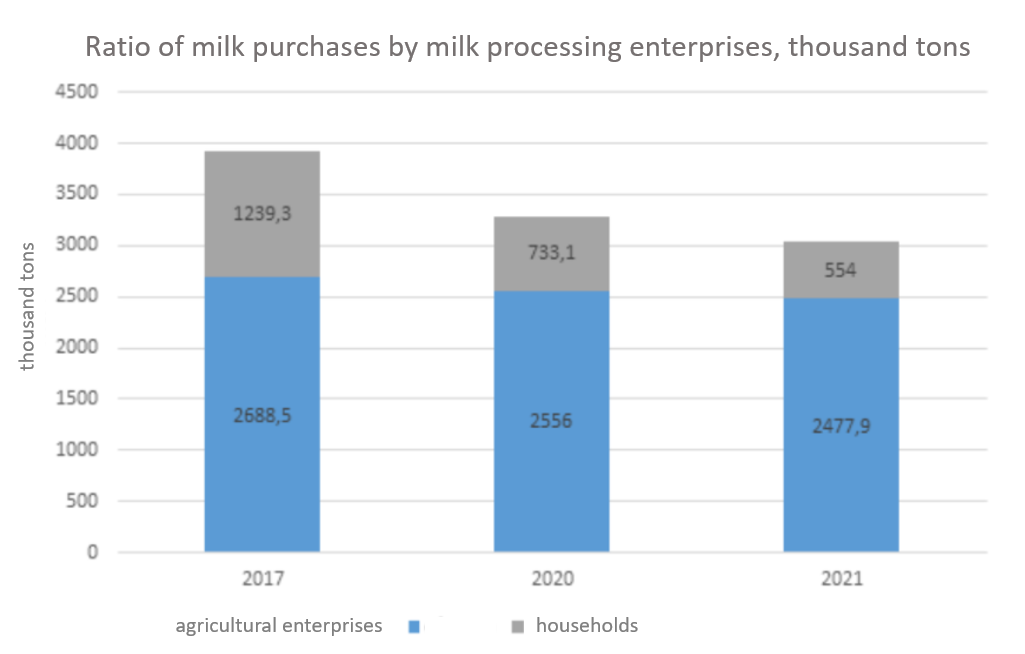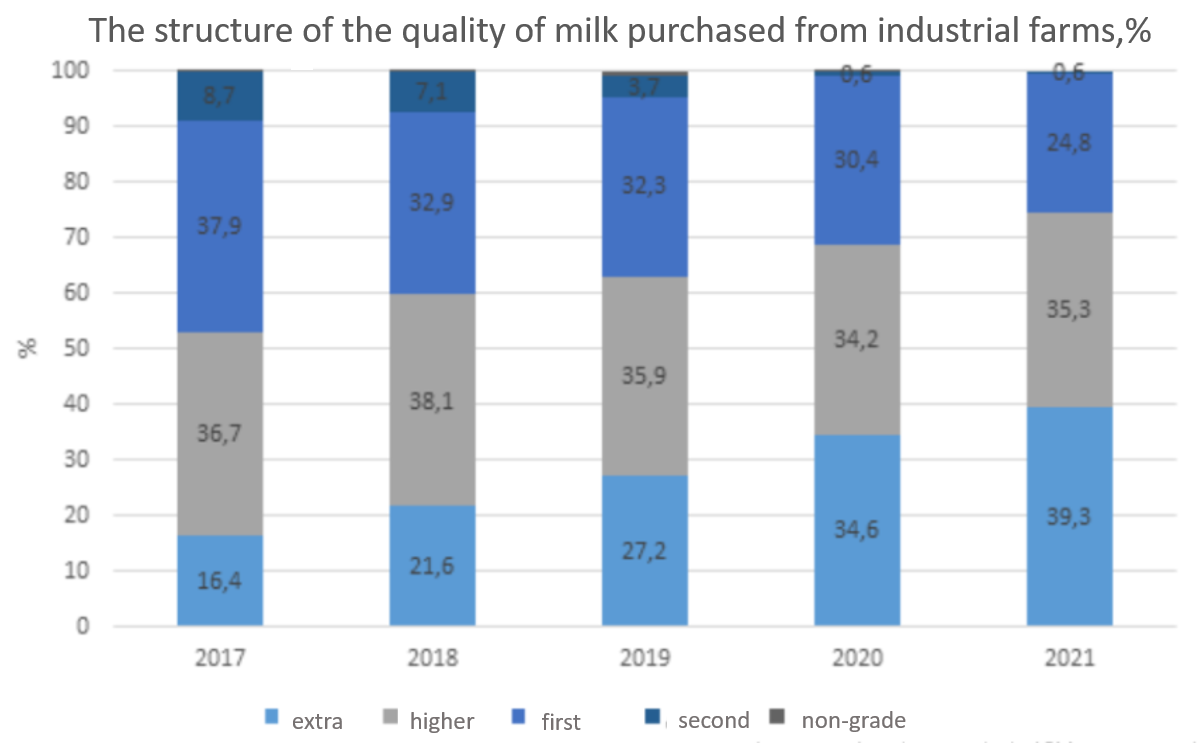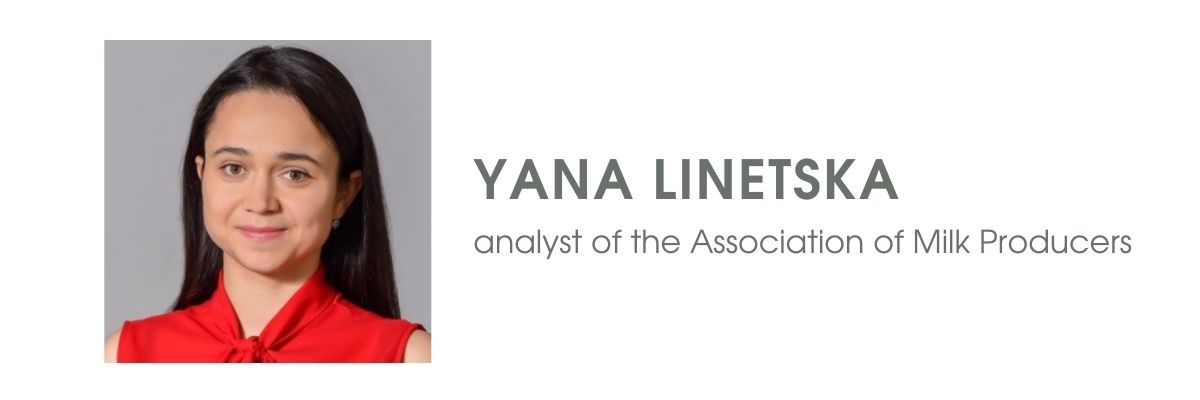According to the results of 2021, milk processing enterprises received 3 million 197.8 thousand tons of milk, which is 8.9% less than in 2020. At the same time, the share of milk from industrial farms is 4.5 times higher than the volume of supplies from the homestead sector, and the extra grade in the structure of supplies surpassed last year's figures by 10%.
In the structure of processed raw milk 3 million 31.9 thousand tons (-7.8%) were purchased, 148.1 thousand tons (-26.9%) were received on a toll basis and 17.8 thousand tons (- 11.6%) were self-produced raw materials.
As you can see, the main source of raw milk is its purchase. The two traditional sources - agricultural enterprises (dairy farms) and households (private farms) - last year were distributed according to the following proportion of milk supply: 81.7% of dairy farms and 18.3% of private farms.
For example, five years ago, dairy farms provided 68.5% of all milk supplied and households 31.6%.
Such significant changes in the proportions are due to changes in the requirements of food law in the context of dairy production and safety indicators of raw milk, as well as a decrease in milk production in households.
In total, 2 million 477.9 thousand tons (-3.1%) of milk were purchased from agricultural enterprises and 544 thousand tons (-24.4%) from households last year.
 The safety indicators of industrial milk delivered to dairy plants in 2021 continued to increase. Most milk was supplied by extra grade - 39.3%, or 973.2 thousand tons, which is 10% more than in 2020 and 2.2 times more than five years ago in 2017.
The safety indicators of industrial milk delivered to dairy plants in 2021 continued to increase. Most milk was supplied by extra grade - 39.3%, or 973.2 thousand tons, which is 10% more than in 2020 and 2.2 times more than five years ago in 2017.
The volume of deliveries of higher grade milk increased from 34.2% to 35.3% compared to 2020 and amounted to 874.7 thousand tons. Milk of the first grade was purchased by 20.9% less than in 2020 - 613, 6 thousand tons, or 24.8% of the total structure.
Quite an interesting situation with the statistics of milk supplies from the population. The increase of the highest grade, which was declared last year, this year proved to be different. Its volumes fell sharply: from 1.6 thousand tons to 665 tons. Although last year the increase was from 822 tons to 1.6 thousand tons. The volume of the first grade decreased by 25.6% - to 435.8 thousand. Although in 2020 there was a fivefold increase. Deliveries of the second grade decreased by 19.6% to 108.5 thousand tons, and in 2020 by as much as 81%.
Probably, they tried to register the milk coming from the population for a higher grade, and this year they leveled the statistics.

In general, the year 2022 began with a very active discussion of the dairy industry in all political and business circles. And in less than two months, a number of initiatives have been developed to overcome the crisis and develop the dairy industry and the dairy industry, which have been delayed for quite some time.
The so-called "crisis package" includes a number of important measures. In particular: the need for urgent changes to the Law on Internal Trade to establish fair trade practices in the producer-processor-network chain and to regulate the trade margin on socially significant products; reducing the VAT rate on food "from the field to the shelf" to support the purchasing power of consumers and domestic demand - following the example of EU best practices; special investigation and restriction of non-competitive imports of dairy products to Ukraine; expansion of state support programs for the dairy industry for the modernization of fixed assets, development, increasing the production of raw milk and combating the gray market and counterfeiting, etc.
We hope that the intentions will turn into real steps, and will not remain declarations on paper.


